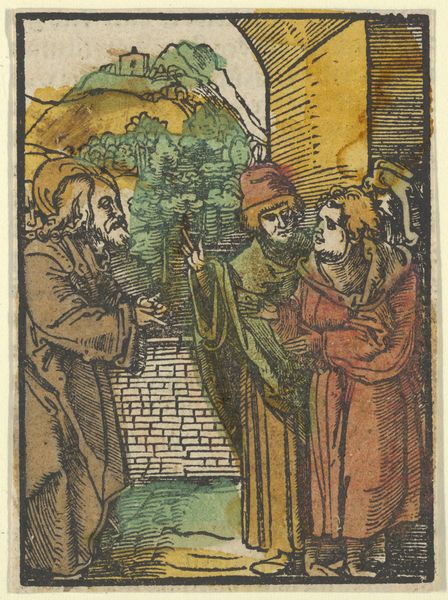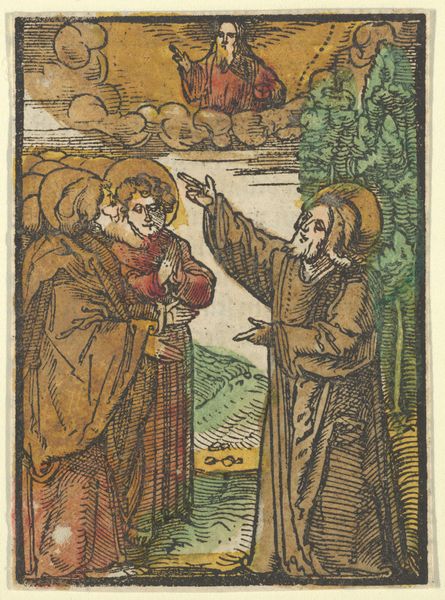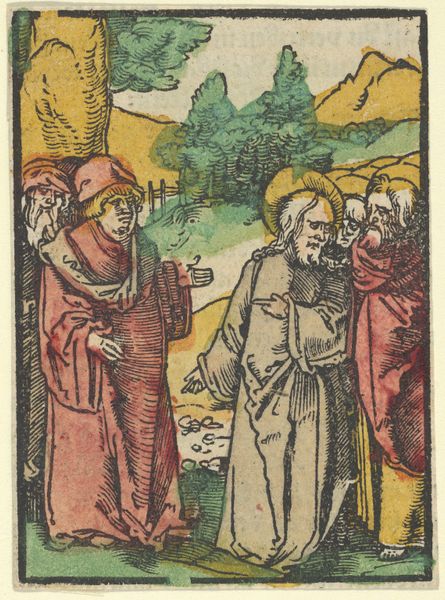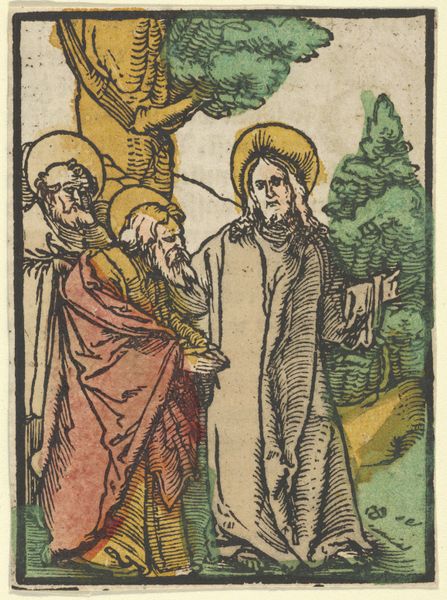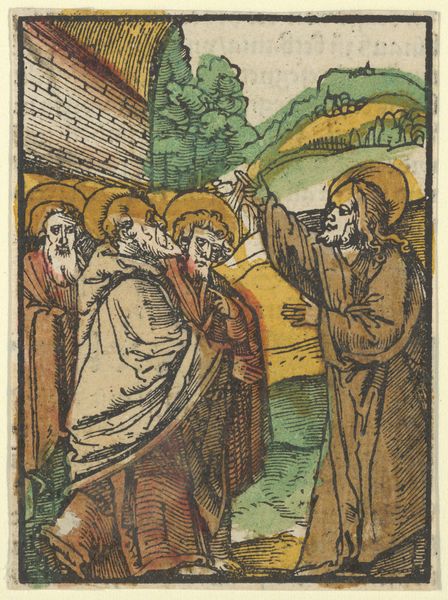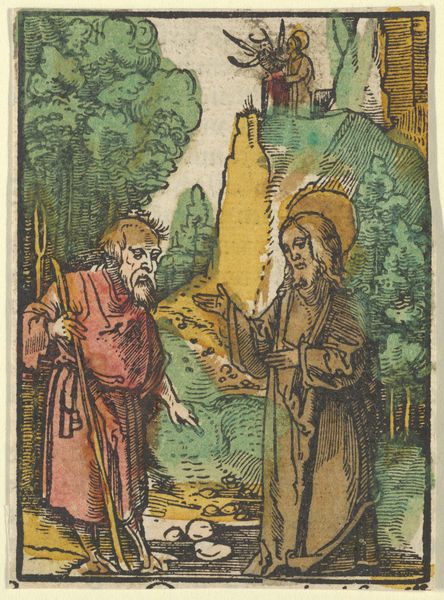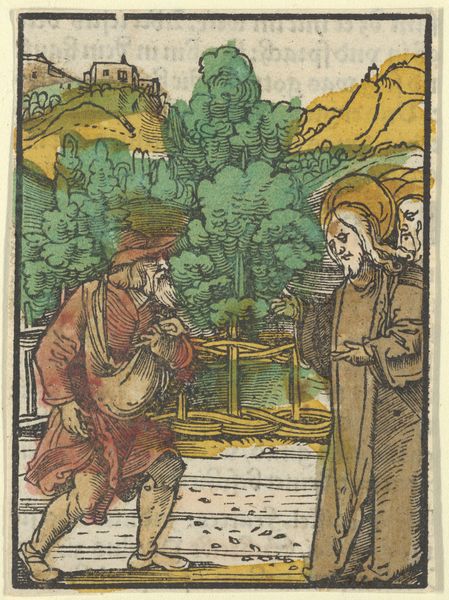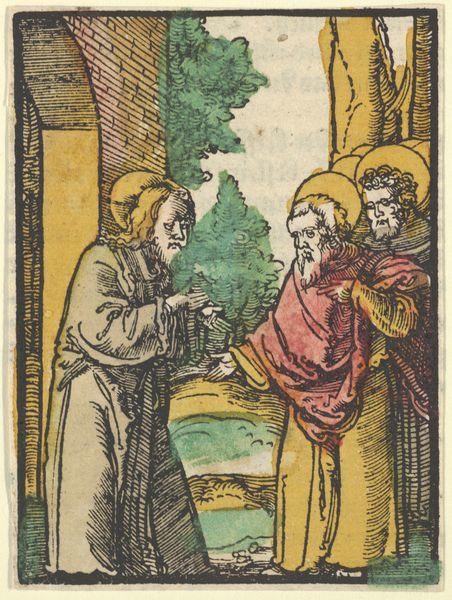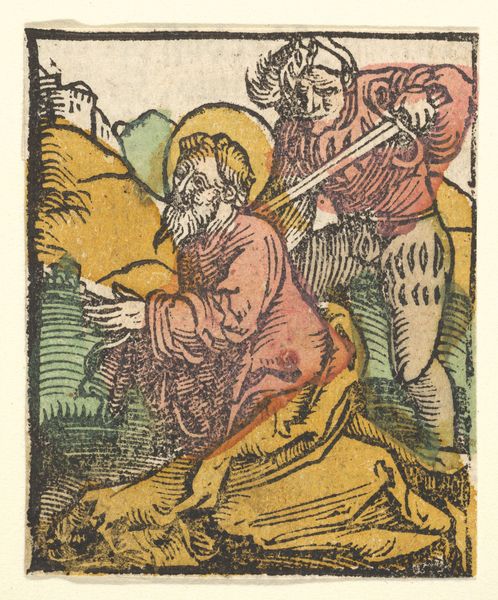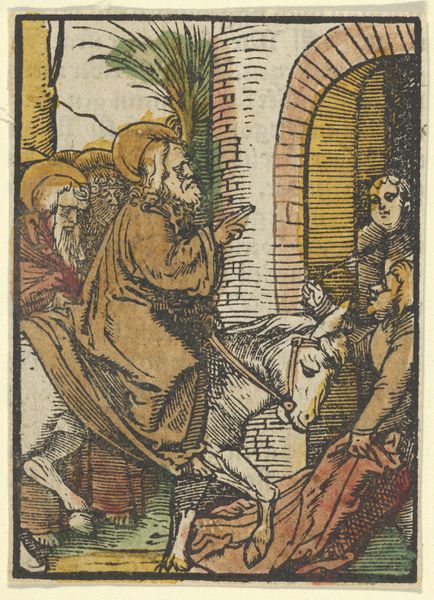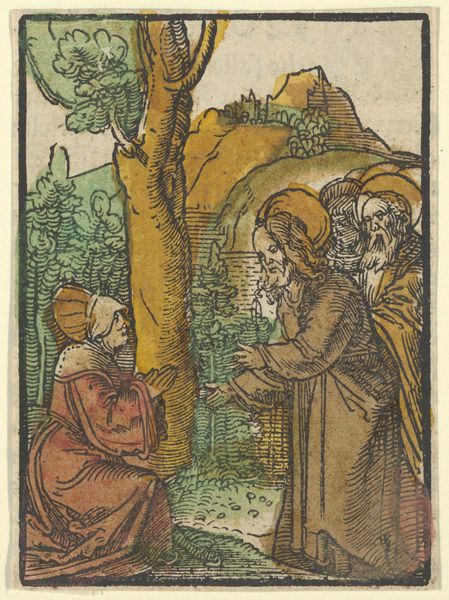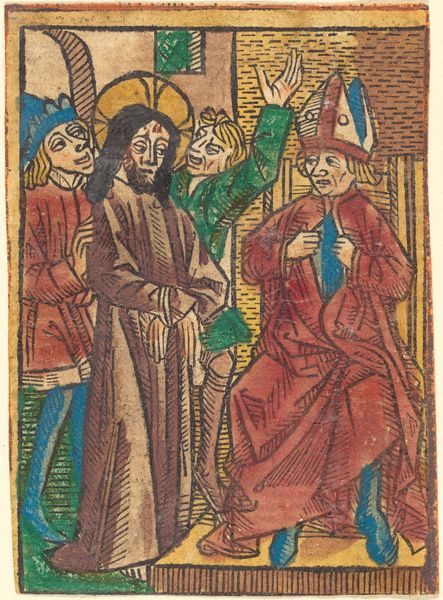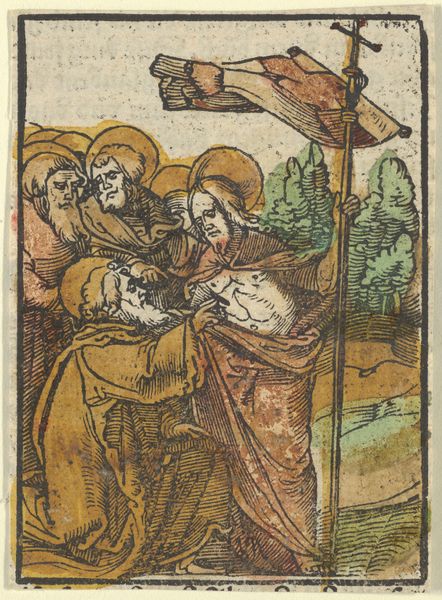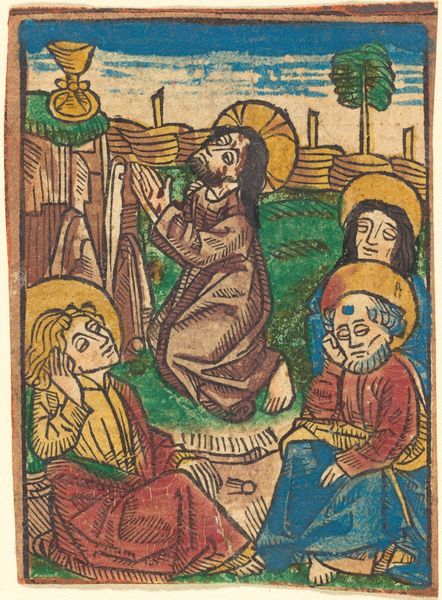
The Virgin as Master Dolorosa and Simeon, from Das Plenarium 1517
0:00
0:00
drawing, print, woodcut
#
drawing
#
narrative-art
# print
#
figuration
#
woodcut
#
northern-renaissance
Dimensions: Sheet: 3 5/8 × 2 11/16 in. (9.2 × 6.8 cm)
Copyright: Public Domain
Editor: This is "The Virgin as Mater Dolorosa and Simeon" created around 1517 by Hans Schäufelein. It's a woodcut, and there's something haunting about the two figures set against that surprisingly colourful background. I'm intrigued by the sword hovering between them. What story does this image tell, and how was it perceived back then? Curator: The woodcut comes from a "Plenarium," a book containing Gospel readings for the liturgical year, making it clear its primary purpose was didactic. So we must think about the socio-political role of such an image at that time. Editor: Didactic, you mean like, to teach something? Curator: Exactly. Consider the period: The Reformation is brewing. Religious imagery becomes a battleground. How does this image engage in that conversation? We have Mary, the Mater Dolorosa, a figure of immense sorrow, paired with Simeon, who prophesied Christ’s crucifixion. Note the sword: a direct visual symbol of her pain, fulfilling that prophecy. Editor: It’s like a premonition hanging in the air between them. The colours almost feel jarring, though. Shouldn’t it be more sombre? Curator: Aha! Colour was added later, printed separately from the line block, which affects our contemporary interpretation, no question. These printed books offered wider access to scripture, circumventing the Church's control. Would you consider this image subversive given the rising Protestant Reformation? Editor: That's a very different perspective! It seems so straightforward at first, but looking at it as part of the religious and political context changes everything. I appreciate understanding how cultural shifts influenced art’s function. Curator: Precisely. Context shapes the narrative. We see not just an isolated image, but a work actively participating in a wider, societal dialogue.
Comments
No comments
Be the first to comment and join the conversation on the ultimate creative platform.
